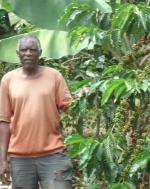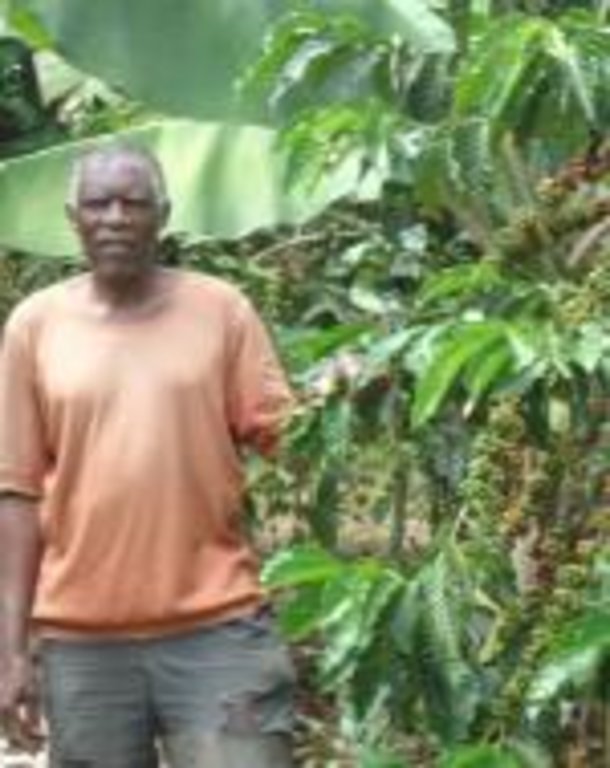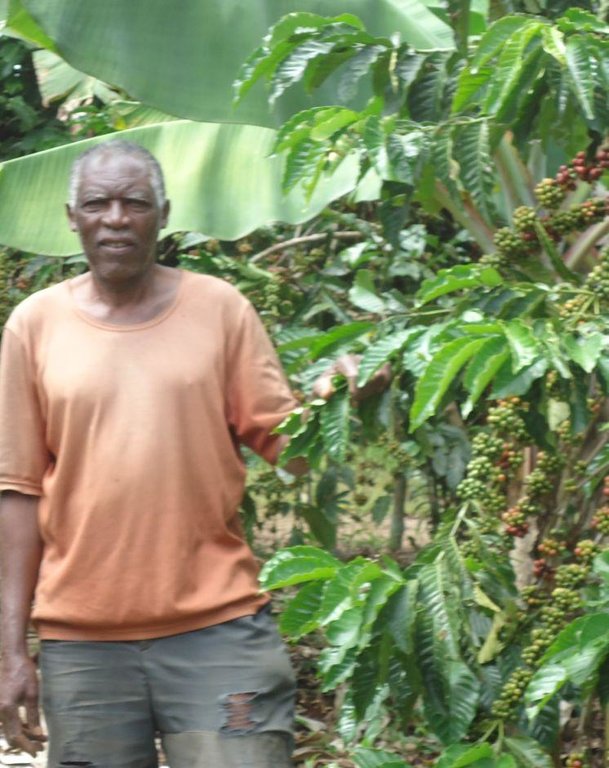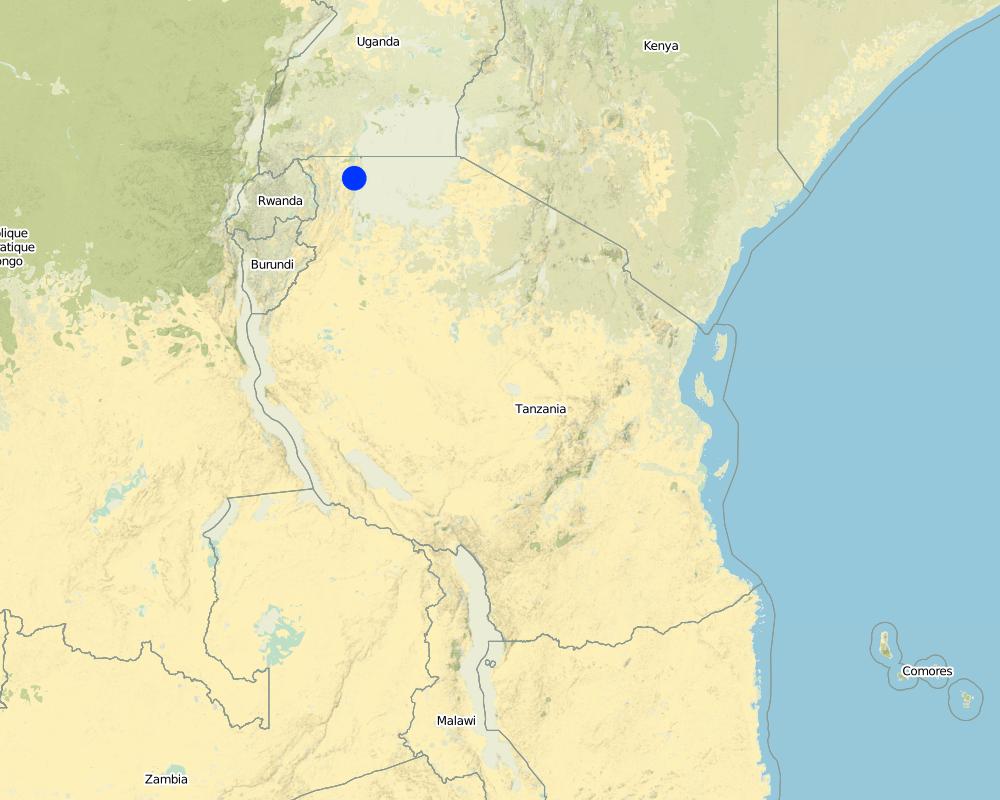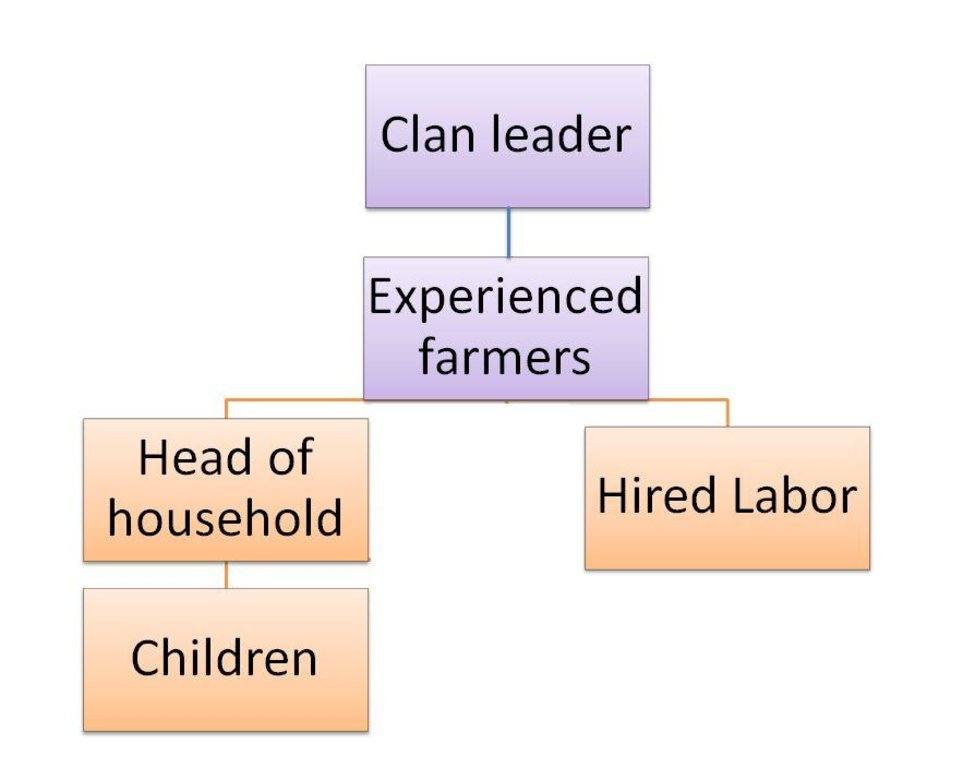Indigenous knowledge transfer [Tanzania, United Republic of]
- Creation:
- Update:
- Compiler: Godfrey Baraba
- Editor: –
- Reviewer: Fabian Ottiger
Emikolele n'emyegesheleze. (HAYA)
approaches_2472 - Tanzania, United Republic of
View sections
Expand all Collapse all1. General information
1.2 Contact details of resource persons and institutions involved in the assessment and documentation of the Approach
SLM specialist:
SLM specialist:
SLM specialist:
Kaihura Fidelis
Kagera TAMP Project, National Project Manager
Tanzania, United Republic of
Name of project which facilitated the documentation/ evaluation of the Approach (if relevant)
The Transboundary Agro-ecosystem Management Project for the Kagera River Basin (GEF-FAO / Kagera TAMP )Name of the institution(s) which facilitated the documentation/ evaluation of the Approach (if relevant)
Bukoba district council (Bukoba district council) - Tanzania, United Republic ofName of the institution(s) which facilitated the documentation/ evaluation of the Approach (if relevant)
Food and Agriculture Organization of the United Nations (FAO) - Italy1.3 Conditions regarding the use of data documented through WOCAT
When were the data compiled (in the field)?
25/05/2012
The compiler and key resource person(s) accept the conditions regarding the use of data documented through WOCAT:
Ja
1.4 Reference(s) to Questionnaire(s) on SLM Technologies
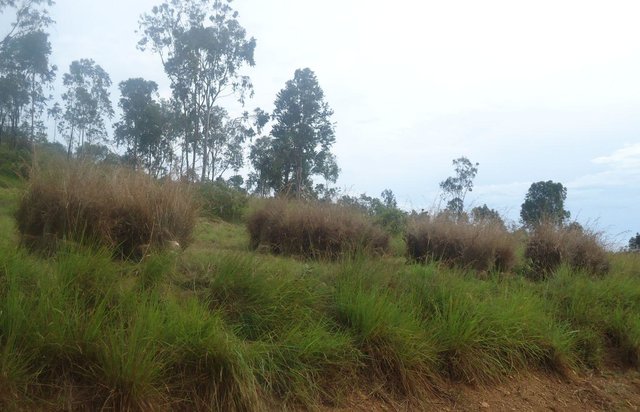
Enhanced mulching in banana and coffee plantation [Tanzania, United Republic of]
Application of Thatch and Hyperrhenia Rufa grass mulch in banana and coffee plantation to reduce soil erosion, improve soil fertility and moisture and ensure high productivity
- Compiler: Iwona Piechowiak
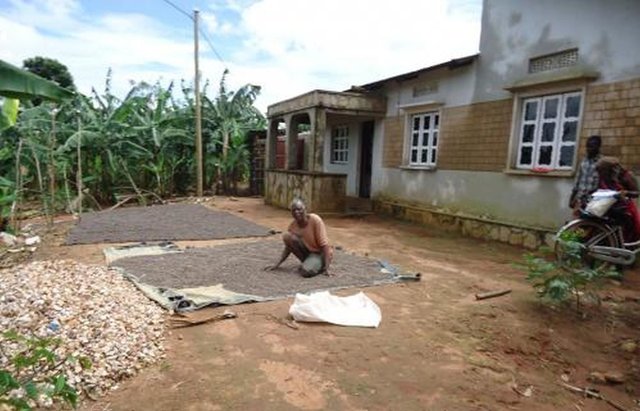
Buhaya agroforestry system [Tanzania, United Republic of]
Traditional agroforestry system comprising mixture of banana, coffee, fruit trees, biannual crops, annual crops and timber trees which together optimize the use of soil, moisture and space.
- Compiler: Godfrey Baraba
2. Description of the SLM Approach
2.1 Short description of the Approach
Indigenous knowledge transfer, is a common phenomena in farming societies whereby elders taught younger generations the practical aspects in production and emphasizes the norms and proms in folk story tales.
2.2 Detailed description of the Approach
Detailed description of the Approach:
Aims / objectives: The main aim of this approach is to improve agricultural production through collaboration of households and the entire community. The approach ensures food security and income with land conservation. The approach is achieved by voluntary learning from the experienced elder farmers. This is achieved by creation of friendly environmental to implement the learning process. The approach is also characterized by traditional prons and norms of the young generation to inherit the elders property.
Methods: The elders spent evening hours to tell farming stories to the younger generation. These stories refer to the success of soil fertility improvement, water resources accessibility and utilization, land use type and farming practices in the community.
Also, practical aspect is attained by involving the younger generation in porting and allocating the land according to land use type.
Stages of implementation: 1. Experienced farmers telling farming stories to the younger while younger listen and ask questions.
2. The elders ask old sayings and elaborate their meaning.
3. Elders demonstrating to the younger, how farming activity are done.
4. The younger implement farming activity and plan for their future.
5.The land is allocated to the younger according to land use type.
6. The younger farmers now are in the position to train their successors.
Role of stakeholders: The major stakeholders are Clan leaders, Head of households, mother, children and hired labour. The roles of Clan leaders are to organize the farming story sessions to the elders and reinforce traditional land norms and proms. The roles of Head of household are to conduct evening farming stories at homestead, encouraging the younger to practice farming by giving incentive according to performance. The roles of the children and hired labour is to work in the head of household farms and ensure proms and proms abides.
Other important information: Nowdays, the approach succeeded to expand cropland beyond grasslands and forestland.
2.3 Photos of the Approach
2.5 Country/ region/ locations where the Approach has been applied
Country:
Tanzania, United Republic of
Region/ State/ Province:
Tanzania
Further specification of location:
Bukoba District
Map
×2.7 Type of Approach
- traditional/ indigenous
2.8 Main aims/ objectives of the Approach
The Approach focused mainly on SLM with other activities (Products diversification, livelihood improvements and land resouces inheretence.)
The main aim of the approach is to improve productivity and ensure younger generations productive land ownership and user rights.
The SLM Approach addressed the following problems: Lack of knowledge and skills of farm technologies, collaboration between households and community, eroded/weakened traditional norms, land ownership inequalities.
2.9 Conditions enabling or hindering implementation of the Technology/ Technologies applied under the Approach
social/ cultural/ religious norms and values
- hindering
Land ownership inequalities, whereby women and girls are not allowed to inheret the clan land.
Treatment through the SLM Approach: Improve women participation in decision making
availability/ access to financial resources and services
- hindering
Farming activities regarded as volatile assets by most financial institutions
Treatment through the SLM Approach: Introduce and impliment subsidies policy.
institutional setting
- hindering
The clan leaders not strong in terms of formal training. Weak reinforcement of laws and bylaws.
Treatment through the SLM Approach: Use extension service staffs to promote informal training.
legal framework (land tenure, land and water use rights)
- enabling
The existing land ownership, land use rights / water rights moderately helped the approach implementation: Individual land ownership without lease smoothing the transfer of land from one parents to offspring. therefore assured perfect training grounds
- hindering
Community not well knowledgeable on land laws.
Treatment through the SLM Approach: Train village land law to the community.
knowledge about SLM, access to technical support
- hindering
Lack of farming technologies transfer.
Treatment through the SLM Approach: Facilitate extension services.
other
- hindering
Some plant spps habours pests
Treatment through the SLM Approach: Planting of pecit repelant species. eg Kajaye
3. Participation and roles of stakeholders involved
3.1 Stakeholders involved in the Approach and their roles
- local land users/ local communities
Household and hired laborers
Adoption farmers tends to use grups for socilization and participation. The difference between the participation of men and women is that, women train children only, while men can also train hired laborers. Hired labour normally spent the day while folk story conducted at night. Labourers including men and women are disposal to men trainings.Women participate in training at all stages but are not involved in land allocation to the younger generations. Women: Have the rights to produce annual crops and decide on the income from it.
Younger: Are assured of land inheritance from their parents.
laboures: Are paid at the market price.
Poor households: assured food security as work for food, informal land renting i.e paying back the prorate produce.
- local government
Provides extension services for up scaling the aproach.
3.2 Involvement of local land users/ local communities in the different phases of the Approach
| Involvement of local land users/ local communities | Specify who was involved and describe activities | |
|---|---|---|
| initiation/ motivation | self-mobilization | Household members. To attend and particiapte in appropriate sessions. |
| planning | self-mobilization | Clan leaders: To identify and select problems and find solutios Head of Household: Children. Siblings: Hired labour: |
| implementation | self-mobilization | Head of the clan: To organise the sittings. Head of Household:To inform the family and conduct the dialogue Children: To participate in farm production, aceptance of allocated land, Using the located land according to land use type. Siblings: To facilitate divison of labour Hired labor: |
| monitoring/ evaluation | none | Clan head: To call the meeting Community leaders: To visit farms and other land, To observe and deliver the assessments. |
| Research | passive | Few farmers participated in adaptive resarch on Kibanja system 1n 1993. |
3.3 Flow chart (if available)
3.4 Decision-making on the selection of SLM Technology/ Technologies
Specify who decided on the selection of the Technology/ Technologies to be implemented:
- mainly land users, supported by SLM specialists
Explain:
Indigenous trainings are formalized by extension staffs. Coffee and Vanilla buyers tends to supervise farms for products assurance.
Decisions on the method of implementing the SLM Technology were made by mainly by land users supported by SLM specialists. Extension staffs monitor, evaluate and advise the proper methods up scaling.
4. Technical support, capacity building, and knowledge management
4.1 Capacity building/ training
Was training provided to land users/ other stakeholders?
Ja
4.2 Advisory service
Do land users have access to an advisory service?
Ja
Specify whether advisory service is provided:
- on land users' fields
Describe/ comments:
Name of method used for advisory service: Train and Visit (T&V); Key elements: Subject Matter Specialist trin field staff on fortnight bases. Field staff visit Progressive farmers and train them, Field Staffs visit Farmers to assess the performance and give feed back to Subject Matter Specialist; The method is very effective under a strong economical situation.
Advisory service is inadequate to ensure the continuation of land conservation activities; Farmer field schools can't reach farming communities with extension staffs based on Ward level.
4.3 Institution strengthening (organizational development)
Have institutions been established or strengthened through the Approach?
- yes, a little
Specify the level(s) at which institutions have been strengthened or established:
- local
- Agricultural advisory services.
4.4 Monitoring and evaluation
Is monitoring and evaluation part of the Approach?
Ja
Comments:
bio-physical aspects were regular monitored by land users through observations; indicators: activities according to the season.
bio-physical aspects were ad hoc monitored by land users through measurements; indicators: Customary land law, land inheretance protocals.
socio-cultural aspects were regular monitored by land users through observations; indicators: Harvesting season
socio-cultural aspects were ad hoc monitored by other through measurements
economic / production aspects were regular monitored by land users through observations
management of Approach aspects were regular monitored by None through observations
management of Approach aspects were ad hoc monitored by None through measurements
There were few changes in the Approach as a result of monitoring and evaluation: Monitoring and Evaluation component took very minimal attention.
There were no changes in the Technology as a result of monitoring and evaluation
4.5 Research
Was research part of the Approach?
Ja
Give further details and indicate who did the research:
Research was carried out on station
5. Financing and external material support
5.1 Annual budget for the SLM component of the Approach
If precise annual budget is not known, indicate range:
- < 2,000
Comments (e.g. main sources of funding/ major donors):
Approach costs were met by the following donors: local community / land user(s): 100.0%
5.2 Financial/ material support provided to land users
Did land users receive financial/ material support for implementing the Technology/ Technologies?
Nee
5.3 Subsidies for specific inputs (including labour)
If labour by land users was a substantial input, was it:
- voluntary
Comments:
Mainly family labour is the major component of input.
5.4 Credit
Was credit provided under the Approach for SLM activities?
Nee
5.5 Other incentives or instruments
Were other incentives or instruments used to promote implementation of SLM Technologies?
Ja
If yes, specify:
Agricultural advisory services.
6. Impact analysis and concluding statements
6.1 Impacts of the Approach
Did the Approach improve issues of land tenure/ user rights that hindered implementation of SLM Technologies?
- No
- Yes, little
- Yes, moderately
- Yes, greatly
6.2 Main motivation of land users to implement SLM
- increased production
Diversification asure grand production
- increased profit(ability), improved cost-benefit-ratio
Implementation costs requires on family labour and commitments
- rules and regulations (fines)/ enforcement
Farming land inheritance protocals and land norms enforcement are ver crucial components.
6.3 Sustainability of Approach activities
Can the land users sustain what has been implemented through the Approach (without external support)?
- yes
If yes, describe how:
It has been in application for very long time, and no signs of retardation observed.
6.4 Strengths/ advantages of the Approach
| Strengths/ advantages/ opportunities in the compiler’s or other key resource person’s view |
|---|
| Local resource person, obedience and committed community. |
7. References and links
7.1 Methods/ sources of information
- field visits, field surveys
- interviews with land users
7.2 References to available publications
Title, author, year, ISBN:
http://www.fao.org/nr/kagera/en/
Available from where? Costs?
Kagera TAMP project website
Links and modules
Expand all Collapse allLinks

Enhanced mulching in banana and coffee plantation [Tanzania, United Republic of]
Application of Thatch and Hyperrhenia Rufa grass mulch in banana and coffee plantation to reduce soil erosion, improve soil fertility and moisture and ensure high productivity
- Compiler: Iwona Piechowiak

Buhaya agroforestry system [Tanzania, United Republic of]
Traditional agroforestry system comprising mixture of banana, coffee, fruit trees, biannual crops, annual crops and timber trees which together optimize the use of soil, moisture and space.
- Compiler: Godfrey Baraba
Modules
No modules


